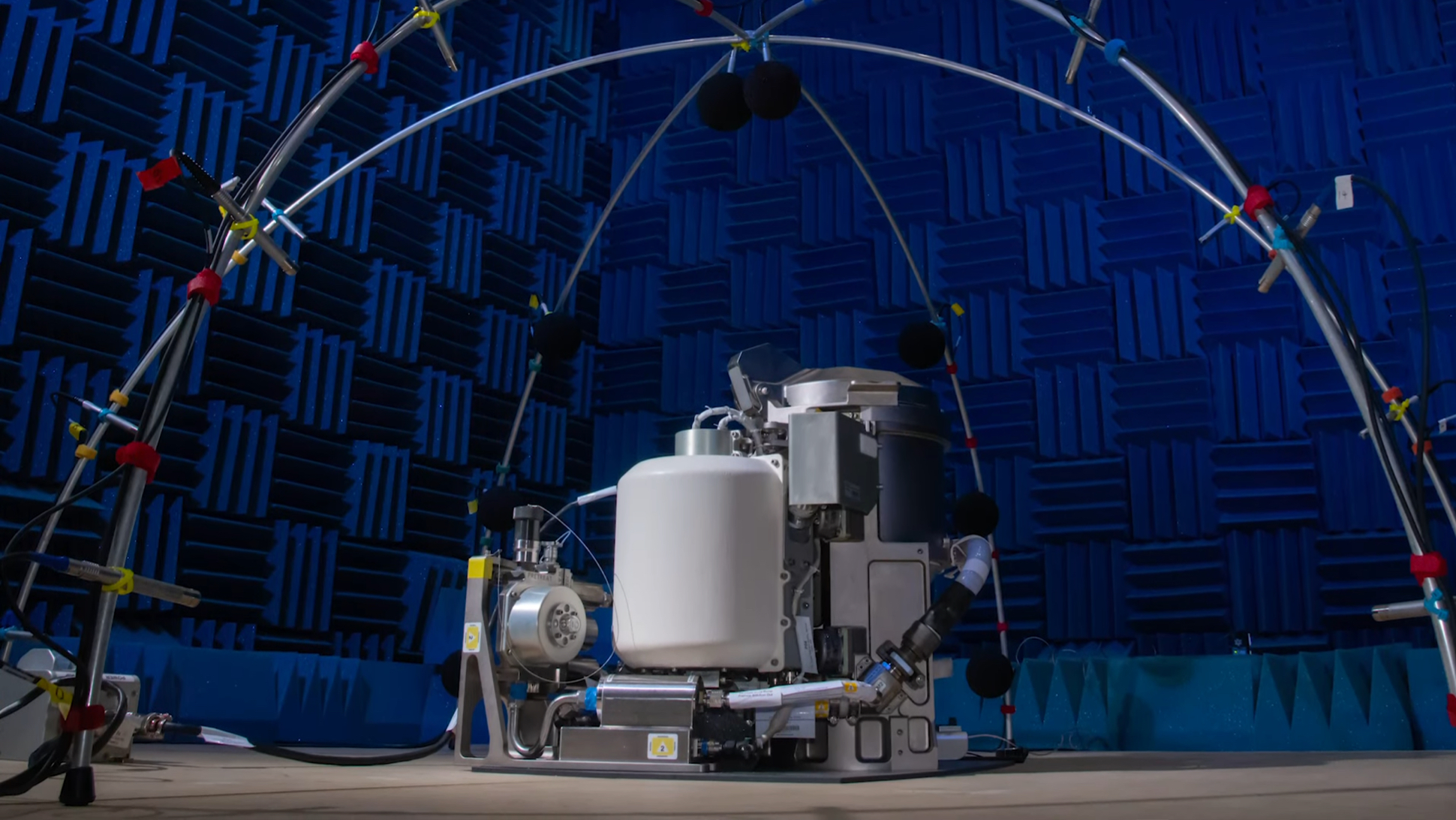

The International Space Station is getting its first new toilet in decades, and it promises to be a crap-ton better than the existing one. NASA’s $23 million Universal Waste Management System (UWMS) is a lighter, more compact microgravity toilet designed to be used with multiple spacecraft and life support systems. It’s also a landmark innovation in space pooping as this is the first space toilet designed to be easier for the women onboard to use.
The ISS is the trial-run for the UWMS before another UWMS gets installed onboard the Orion spacecraft. Orion will be used for the Artemis II 10-day mission to send astronauts beyond the moon, which is a test run in itself for longer-duration missions and thus, a good reason to update the onboard toilet.
The ISS is a great place to test it out, though, as there’s another toilet onboard that can serve as a backup as the crew tests and improves this new toilet tech.

[The bathroom chat—including more info on the UWMS—starts at 2:55.]
Space toilets use a fan-powered vacuum system to suck your bowel movement away to be stored or recycled. These toilets don’t look like a particularly relaxing place to sit, but according to NASA, the pointed shape of the seat provides “ideal body contact” to capture all of the poop.
Space toilets have used different inlets for number one (a funnel and hose, where the funnel can be taken off for disinfecting) and number two (the big hole) for decades now, but the UWMS took feedback from astronauts to figure out how to make this awkward process a bit more comfortable. Melissa McKinley, a NASA project manager for the UWMS, explained to The Verge:
“The funnel design was completely re-contoured to better accommodate the female anatomy, and particularly this is a concern when the crew members are trying to do dual ops — when they’re doing both defecation and urination at the same time.”
The shape, length and position of the pee funnel itself were all guided by female astronauts’ input. Women in particular found it hard to sit down and take care of both bodily functions at once, too, so the new UWMS has a revised seat design for just that reason.

There are also new foot restraints and handholds with the UWMS to prevent astronauts from floating away from the task at hand. Previously, thigh straps were used to keep them in place, which everyone found annoying to use, NASA explained.
For the first time ever, the UWMS also starts the air flow the second the lid is lifted, eliminating one source of potential floaters when someone forgets. They’ve also designed it to be more corrosion-resistant and durable to minimize the time spent dealing with plumbing. Metals like Inconel, Elgiloy and titanium were 3D printed into parts specifically for their ability to withstand the highly acidic solution used to pre-treat urine so it doesn’t leave any solid deposits in the system, reports The Verge. The toilet’s fan is the largest of these parts, as it was 3D printed out of titanium.
It’s also designed to be more energy efficient, which is a major plus in an isolated space-tube with limited resources.
“You can imagine that optimizing those can help out in lots of ways because space and power are at a premium on a spacecraft,” McKinley explained to The Verge.
Getting the new toilet into space is easier than ever, too, as it’s 65% smaller and 40% lighter than the model currently in the ISS. Space is always at a premium for restocking missions like that brought the toilet into space tonight, which is why every time I’ve asked if I can send Fluffy Bunny into space, the answer usually involves vacuum-packing. (The Space-X Dragon’s stuffed dinosaur had it easy, man.)

Even how the UWMS handles pee and poop is adaptable for different situations. Onboard the ISS, it will send pre-treated urine into a system that recycles water for use onboard.
“We recycle about 90% of all water-based liquids on the space station, including urine and sweat,” NASA astronaut Jessica Meir explained in the UWMS announcement. “What we try to do aboard the space station is mimic elements of Earth’s natural water cycle to reclaim water from the air. And when it comes to our urine on ISS, today’s coffee is tomorrow’s coffee!”
Think less Bear Grylls and more what comes out of your faucet at home. The UWMS is supposed to be better integrated with these pee-recycling components aboard the Space Station, thus allowing it to recycle more urine for use later. Being able to recycle more water from pee also reduces the amount of water that needs to be sent from Earth.
For shorter missions like the Artemis II, UWMS will work with a system that simply stores untreated urine for later disposal. (I just hope the storage vessels are spherical in shape for…reasons.)
Astronauts put wipes, gloves and toilet paper into water-tight bags when they’re done. Poop also goes into water-tight fecal storage bags, although NASA is looking at how to extract and recycle water from this in the future. For now, most of those poo-bags are compacted into a removable fecal storage canister. Most of these go into small cargo ships designed to burn up upon reentering Earth’s atmosphere, but some get brought back to earth for further study.
The UWMS was launched up to the ISS tonight aboard a Northrop Grumman cargo launch from NASA’s Wallops Flight Facility in Virginia. You can rewatch the resupply mission here:

[H/T Steven Harrell!]
Got a tip? Send us a note: tips@thedrive.com